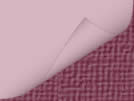
Archives
 |
 |
 |
 |
 |
 |
 |
|
|
Arina Bora
«Dreams of Europe»
21 December – 21 January 2010
 |
 |
 |
 |
 |
 |
 |
 |
 |
 |
 |
 |
 |
 |
|
Miss Arina Bora (Berezhnaya) is an artist, who painted all of these displayed artworks. She was born in Leningrad (St. Petersburg). She graduated from the History Faculty of The State University of Leningrad. She also studied Philosophy, History and The Theory of Arts in Italy in the University of Milano, and in the State University of the city of Rende in Calabria.
At present time Miss Berezhnaya is engaged in writing and also in translating projects.
Dreams of Europe is a name for three series of artworks which include Dreams of Europe, The Desert’s Soul and The Overshoes of Good Luck, all united under one name. All these artworks are painted in the style of Naïve Symbolism. The roots of this particular style originated in Medieval Europe, in the history of the first handwritten books and Gothic visual Arts related to it. These first books were generously decorated with miniatures hand painted by high spirited monks who used to compensate the lack of artistic skills by patience and hard work at the time, where printed books and stamps were not yet invented and the very concept of the Academic style in Arts could not even be imagined.
We should keep in mind that the classic theater had not existed as well at that time until William Shakespeare founded this branch of performance arts, which was preceded by traveling actors, minstrels, troubadours and puppeteers. These traveling performers of all sorts also represented the style of Naïve Symbolism albeit the difference of tools and working space. This sort of art was not actually encouraged by the Church at that time. The World of medieval men would seem stripped of any aesthetical pleasures, but that was the time of accumulating the spiritual potentials in all Arts that later awakened and flourished in the Renaissance époque. And that was the most important historical issue.
In her series of these artworks the author portrays Europe as some sort of an animated substantial image carrying the accumulated memories of her Youth, filled with primal naïve ideas about life, the time of very simple relationships between her and reality, that could be described in simple formulas like; Me and The World, Me and My Destiny, Me and My Soul, Me and God.
Apparently the dynamics of human emotions and people’s learning attempts were much more intense than rather static visual arts which at that time were dominated by religious dogmas and simply could not catch up with the progress and that forced human culture to break trough the iconic painting traditions to the more realistic image of Men.
The sincerity of those imperfect miniatures illuminated them with inner kindness of human spirit, and extended the life of this particular type of visual arts well into the next century, even after the printing machine was invented. Those miniatures stopped being popular only after the second half of 16th Century.
The Renaissance started with the revival of antique arts in form of Roman and ancient Greek statues found during the archeological explorations. But before that the medieval artists had to create without any theoretical base as Academism or Realism, etc. Suppressed by religion those artists had to employ simple naïve symbols, encrypting in them common human values as history, stories of life, emotions, Nature and their inner spiritual world. These symbols served as the only possible form of transferring the artistic information, that is why the shapes look flat and the faces are stripped of any individuality and also have no volume.
And sometimes this kind of naïve sincerity and simple openness seems to be missing in our modern life and arts.
Without directly imitating the style of Naïve Symbolism, the artist is trying to communicate with the public using the language of medieval men in her series. This language is both very simple and mysterious and requires some kind of translation. That is why the author of Dreams of Europe and The Desert’s Soul provides the viewers with a short description of every artwork of hers. Of course the modern imagination of the artist is ever present, too. Her fantasy connects our present time with the medieval one in a dream like state. All her artworks are painted by oil colors and look like enlarged miniatures in hand written books.
Every picture is accompanied by author’s comments, descriptions and historical facts. All the presented paintings create a very special and bright World of Symbols in which The Present and the Past are united in one World full of reflections. Despite of the seemingly naïve and primate visual style this art is highly intellectual one.


